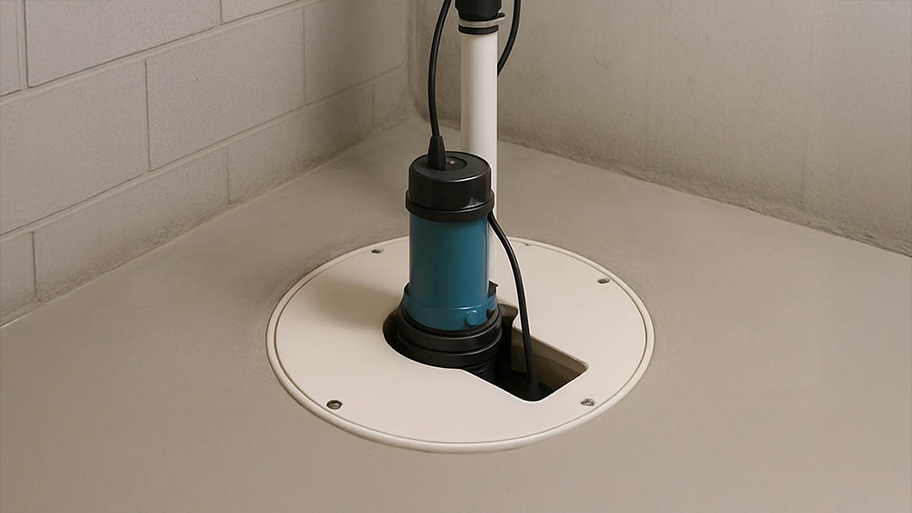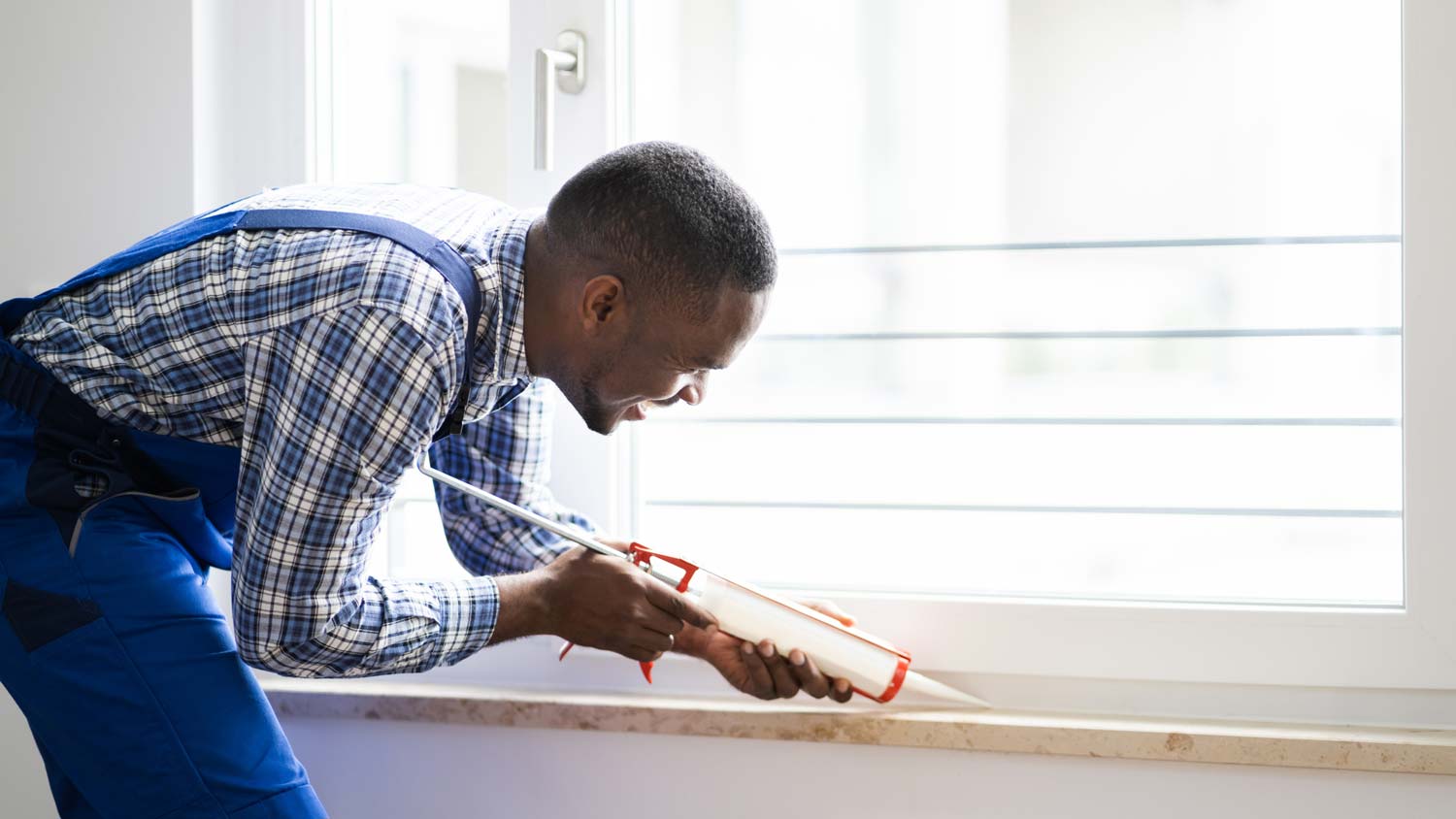
Discover how much sump pump installation costs, including average prices, key cost factors, and tips to save on your basement waterproofing project.
Be prepared for floodwater before it comes knocking on your door (literally)


Flooding can happen anywhere, anytime, so protecting your home is vital. Certain landscapes called floodplains are more prone to flooding than others, but there are precautions every DIYer can take to prevent damage to their property if floodwater ever comes calling. Learn how to keep floodwater out of the house from a DIY perspective and know when to call a waterproofing professional to tackle the rest of the job.
Floodwater and standing water can be very dangerous for your health, and in the case of flooding, they pose a drowning risk for everyone—regardless of their ability to swim. If the floodwater carries an electrical current, it also puts you at risk of electrical shock.
You have to be especially careful if you have open wounds or broken skin that could come into contact with this highly bacteria-ridden water, as it can carry disease or illness. The best way to protect yourself is to simply stay out of the water.
Note: If your home has already flooded, follow the steps laid out by the Centers for Disease Control and Prevention (CDC) and contact a local pro who can help you avoid the potential risks of cleaning up after a flood on your own.
If floodwater accumulates in your home, it can cause thousands of dollars in interior damage, from mold and mildew to electrical or structural damage. Floodwater can render your home in complete disrepair, forcing you to find a new one. Knowing the common causes of flooding can help you stay prepared.
Common causes of flooding include:
Heavy rain
Melting snow or ice
Storm surges
Flash floods
Overflow from a nearby body of water
Dam or levee damage
Storm drain or ditch overflow

You can take plenty of steps to prevent floodwater from getting into your house. First, make sure you understand your risk level by checking your local flood zones with the Federal Emergency Management Agency’s (FEMA) Flood Map Service Center (MSC) and find out whether or not your insurance includes flood protection if you think you need it. Then, it’s all about assessing your property’s weak points and improving them through DIY projects.
Having a home inspector check your foundation is always a good idea since they have the training to find flaws and leaks that most of us can miss. In the meantime, look at the foundation for cracks, damage, or weak points that could signal an entryway for floodwater.
According to data from Angi, the most common foundation problem is basement flooding, making up about 29% of reported issues. Another 20% of homeowners reported issues with excessive dampness, while 15% mentioned problems with mold, mildew, and fungus. Take a look at the chart below to see how the most common foundation problems break down.
It’s not just outdoor conditions that can flood your home—an appliance or utility malfunction can do the trick, too. Check on all your water-based appliances, such as the washing machine, refrigerator, dishwasher, HVAC, and water heater, to make sure everything is running smoothly and is safely guarded against overflow.
Clean gutters and well-positioned downspouts are essential for keeping floodwater from entering your house. If your gutter is clogged with leaves or debris, it could overflow easily. That water can divert into your basement, create a ditch, or cause mold in your foundation. As for your downspout—the pipe connected to the gutter that runs vertically down the side of your home—make sure it’s pointing water away from the house, especially if you’re on a hill.
Leaks in siding, windows, and door frames could be a major point of entry for floodwater. Check every opening to your basement or ground-level floor to see where the weak spots are. Once those are identified, you can hit them with some caulk and sealant to ensure they’re watertight.
You can also hire a local basement waterproofing company and install flood-proof doors to prevent water from entering and moving through the house.
This is one of the best preventative measures to keep floodwater out of the house as a DIYer. A sump pump sits at the lowest point of your home (most commonly in the basement) and directs any accumulating water up and out of your home through pipes. Homes will come with a built-in sump pump as required by local regulations. Otherwise, you may have to install it or hire a pro of your choice.
Mulch in direct contact with siding can trap moisture and cause rotting, creating a space through which water can enter the siding and foundation. Leave about 6 inches between the mulch and siding so the siding can dry after rain and snow.
A flat lawn—or worse, one that slopes toward the house—can trap water against the foundation. Your lawn should slope away from your home, with a slight slope to prevent water from entering the house.
If your lawn doesn’t slope, you can have it graded to lead water away from the foundation. Slope changes combined with strategic plant choices, such as grass or low-lying plants near (but not up against) the foundation, can further absorb water and direct it away.
Sandbags are a great physical barrier to keep floodwater out because as sand soaks up moisture, it gets thicker, making it harder for water to pass through. You can make or purchase them yourself, or some local authorities will distribute them before a flood risk.
Have a supply of easy-to-carry sandbags at the ready in your basement or garage to stack up around your home's flood-vulnerable points when needed.
Sandbag placement matters, so take the time to learn how to do it effectively. Place each sandbag lengthwise and parallel to the direction the water may flow from. Fold the open end under the bag and face it toward the flow of water.
Set the second row of sandbags on top of the first and offset them by half a filled bag’s length to stagger the stack. If the stack is unsupported, you can stack them like a pyramid.

Local counties and governments will often send out flood warnings ahead of time through local television networks, weather apps, and social media to let locals know if an incoming environmental event could cause flooding in homes.
If this is the case, you can take plenty of short-term safety measures in advance that will help you avoid the threat of floodwater and prevent your home from being damaged.
Use duct tape and plastic sheeting to cover openings and weak points in doors and windows. You can also use it to plug any gaps, drains, electrical outlets, and appliance doors.
Set up anything that can help provide a physical border between your home and the impending floodwater. Pile sandbags in doorways and put expanding foam in the cracks and borders of your windows.
Take all your electronic devices and wrap them up in plastic. Make sure they’re completely watertight by running tape (ideally duct tape, but any strong tape will do) along the plastic as well.
As noted above, if you already have floodwater in your home, follow the guidance of official organizations like the CDC and FEMA. Cleaning out a flooded home is best left to professionals, so find a water cleanup pro in your area who can help. The main priority once a home has been flooded is to remove the water to prevent the buildup of mold.
You can avoid further hazards by shutting off your water, gas, and power supply (call a pro or utility company who can do so safely). Also, call your insurance provider to assess the damage and see what your policy covers. Sometimes, if you need to relocate temporarily while your home is being cleaned up, there will be insurance reimbursements that can help you do that.
From average costs to expert advice, get all the answers you need to get your job done.

Discover how much sump pump installation costs, including average prices, key cost factors, and tips to save on your basement waterproofing project.

Need to fix basement water problems or safeguard your home from damage in the future? Use this basement waterproofing cost guide to budget appropriately.

A variety of factors can affect your total crawl space encapsulation cost. Here’s a breakdown of the cost of this project, whether you hire a pro or DIY.

Choosing where the sump pump water goes affects the effectiveness and longevity of your sump pump system. These tips can help guide you in the right direction.

Is it okay to dump water in a sump pump? Learn more about sump pumps, including how to test them, maintain them, and best practices for filling them with water.

Wondering how to get rid of musty smells in your basement? Get rid of them permanently using this DIY guide and learn when to call a pro.